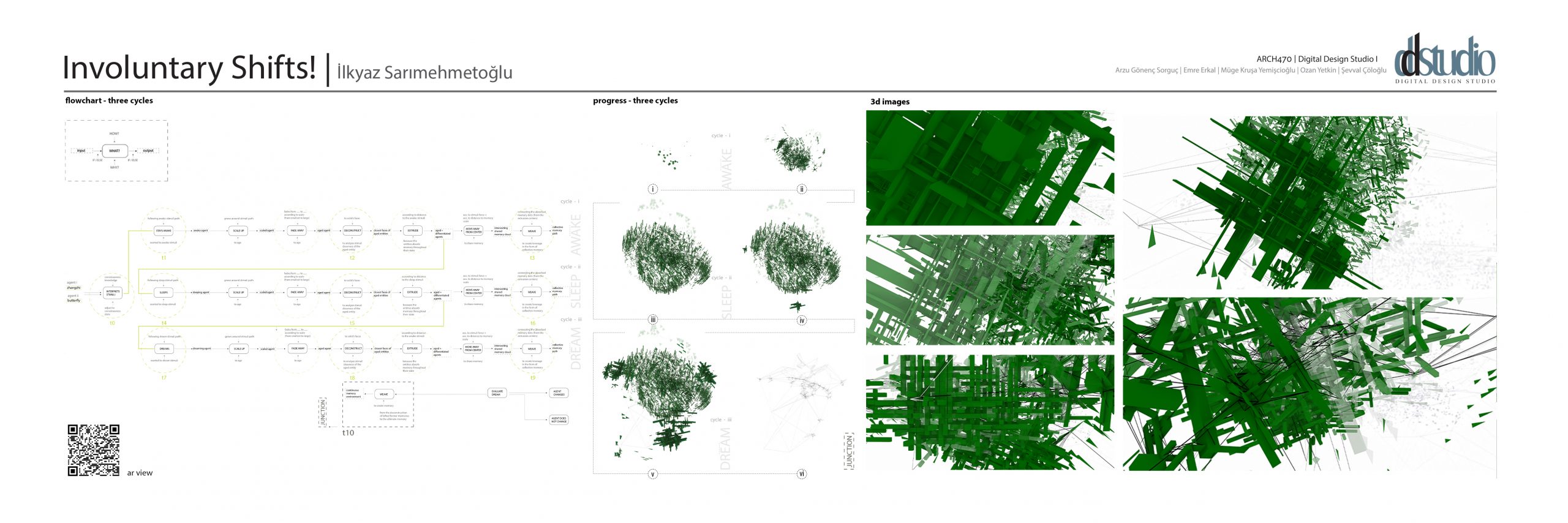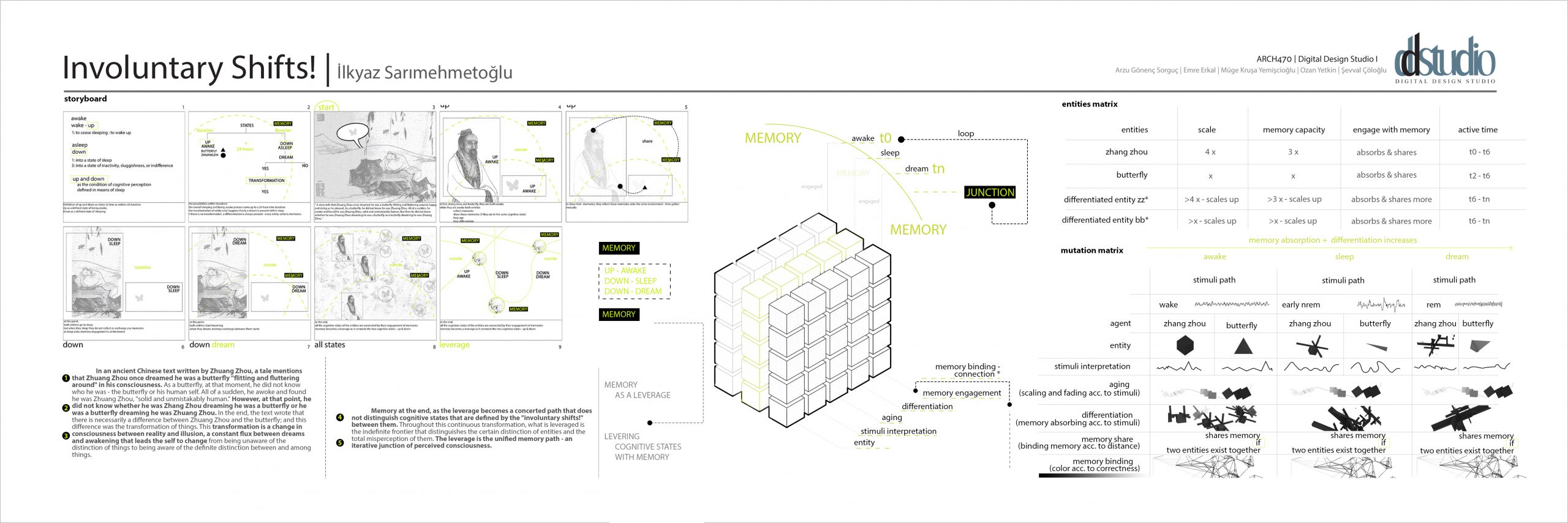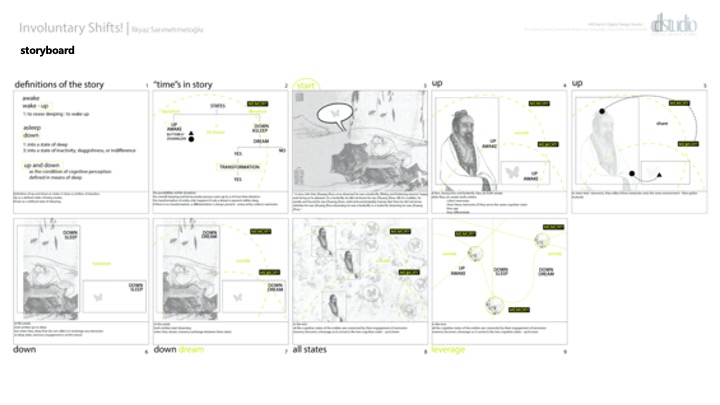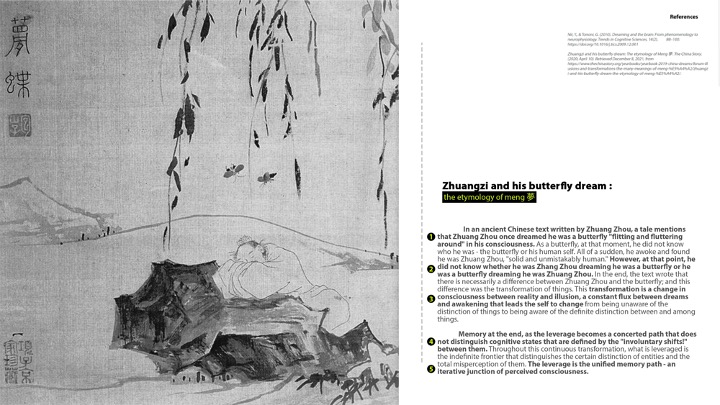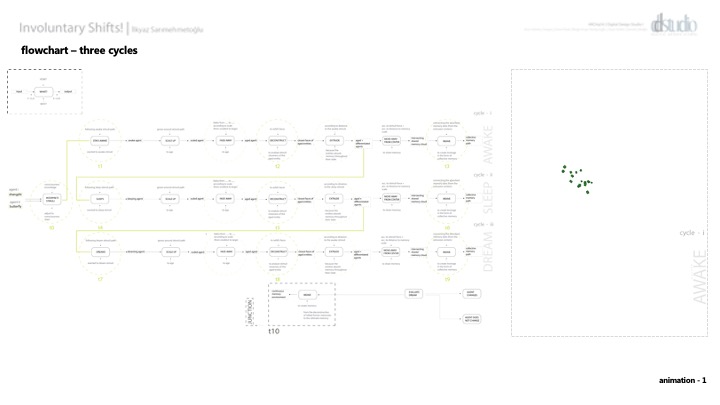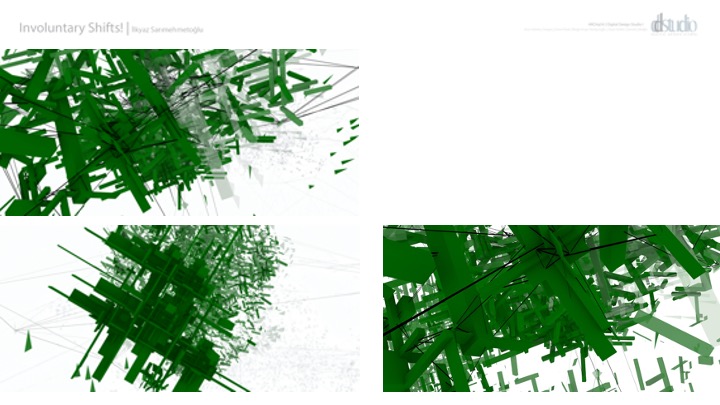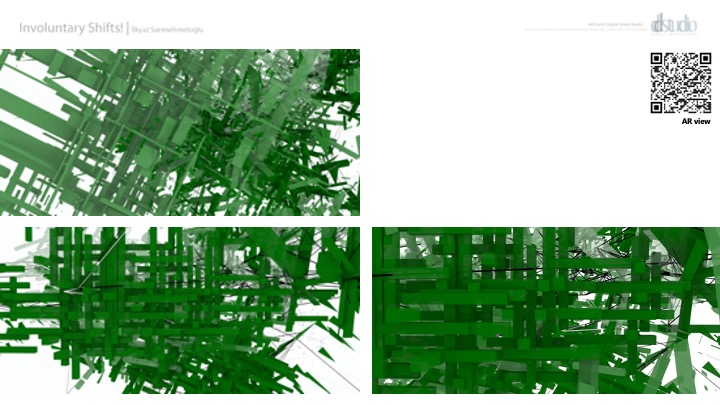İlkyaz Sarımehmetoğlu
2022 Fall
ARCH470 Digital Design Studio
Memory perception of living things is a shared statement of the environment they recognize and inhabit. Memory is a phenomenon that takes place in several cognitive states and bounds them altogether. When we are awake, we witness and collect memories. When we are asleep, our senses take action and continue to perceive while making their remarks, and when we are dreaming, our dreams turn into short-term recollections of what we perceive. All these reminiscent of recollections are compassed through the memory, a matter of fact.
In an ancient Chinese text written by Zhuang Zhou, a tale mentions that Zhuang Zhou once dreamed he was a butterfly “flitting and fluttering around” in his consciousness. As a butterfly, at that moment, he did not know who he was – the butterfly or his human self. All of a sudden, he awoke and found he was Zhuang Zhou, “solid and unmistakably human.” However, at that point, he did not know whether he was Zhang Zhou dreaming he was a butterfly or he was a butterfly dreaming he was Zhuang Zhou. In the end, the text wrote that there is necessarily a difference between Zhuang Zhou and the butterfly; and this difference was the transformation of things. This transformation is a change in consciousness between reality and illusion, a constant flux between dreams and awakening that leads the self to change from being unaware of the distinction of things to being aware of the definite distinction between and among things.
As Zhuang Zhou wrote the recollection of transformation is possible through the remembrance of those certain memories of dreams and awakenings, what binds them all together is the collective juxtapositions of memory out of diverse cognitive states.
In that sense, the project aims to bind diversified cognitive states of the agents (Zhang Zhou and the butterfly) through overlaying remembrance in all respects, to introduce collective memory as “leverage” to identify the continuous and iterative process of memory recollection through all cognitive states. Actions of awakenings, perceptions of being asleep and epoch of sceneries, sounds in illusion, in the state of dreaming are realized through memory . From being awake to falling asleep, then deep-diving into dreaming, the constant flux, defined as the transformation of things, occurs involuntarily. Memory at the end, as the leverage becomes a concerted path that does not distinguish cognitive states that are defined by the “involuntary shifts!” between them. Throughout this continuous transformation, what is leveraged is the indefinite frontier that distinguishes the certain distinction of entities and the total misperception of them. The leverage is the unified memory path – an iterative junction of perceived consciousness.




